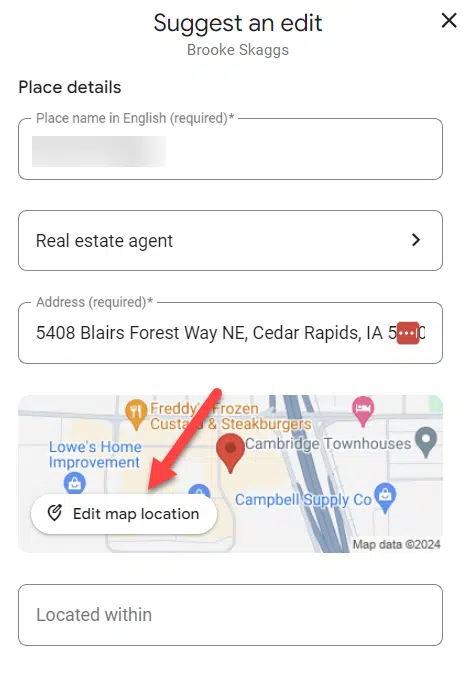Opinions expressed by Entrepreneur contributors are their own.
Most noteworthy businesses and websites are capable of hitting the magic 100,000 visitors per month. Countless high-potential companies lose the battle for page views simply because they don’t know how. There are, however, some factors you need to consider before embarking on this quest for more clicks.
For starters, there is no one-size-fit solution that works for every niche website. The work involved in generating 100,000 organic visits per month varies depending primarily on the following:
- The competitiveness of your niche.
- The quality of your content.
- Your website’s domain’s authority and backlink profile.
SEO can feel overwhelming as you learn about the different factors and metrics that drive 100,000 organic visitors. Mainly, however, you need to focus on these three factors:
- Keywords and competitor research.
- Content organization — pillar pages and content clusters.
- Deploying your SEO content machine.
Let’s take a closer look at each of these variables!
Related: How to Grow Your Brand’s Digital Presence from 0 to 100,000 Followers in Just 6 Months
Keyword research
The first step is to dig into your competitors’ keywords and filter them down to the keywords you can rank for. Use a tool like Ahrefs or Semrush to find the total volume for keywords directly.
If your organic visibility is relatively weak compared to your competitors, we recommend staying away from high-volume, high-demand keywords and instead focusing on “medium-tail” and “long-tail” keywords. These keywords are more specific and less competitive, offering an opportunity to tailor content to specific search intent and achieve higher rankings across several terms.
Content organization
Now that you have your target keywords, the next step is to create pillar pages linking out to content clusters for the topics you want to target. This means using the keywords throughout your content naturally and ensuring your content is relevant to your target audience.
The beauty of creating pillar pages and content clusters is not only all the internal linking going on and the topical authority that can be created but also the various terms, volume, and difficulty levels that will help you get more keywords ranking.
So, what are pillar pages and content clusters?
Pillar pages are the key pages that build topical authority on your website. These pages are typically long-form, detailed articles covering a given topic in detail. Pillar pages are linked to clusters of other content (blogs and articles on the same or related topics), helping them rank higher in search results due to their semantic relevance.
A look into the most authoritative websites will explain how these pages look. Investopedia’s “Stock” page is a great example of this: this pillar page holds the “cluster” of everything that is “Stock” related.
When planning and building content, it’s essential to:
Choose the right topics for your pillar pages: Focus on the relevant topics for your target readers, prioritizing high search volume without neglecting low volume. You can use keyword tools like Ahrefs or Semrush to find topics showing decent traffic potential with a high keyword volume but with low enough competition that you’ll be able to rank.
Create high-quality content: Pillar pages will act as the first resource pages for your readers. These articles should be informative, authoritative and up-to-date with a variety of media forms like images and videos. Google favors content that’s authoritative and trustworthy. With this in mind, you should try to write content that will be hard for competitors to replicate and give your audience some practical value based on their search intent.
Optimize your pillar pages for SEO: Optimize your pillar pages by placing the right keywords in the headings and bodies and pass backlink equity to your other pages with internal links. Ensure the navigation is user-friendly and organized in a logical way. You should also include a call to action on each pillar page to direct visitors towards conversion.
Pillar pages and content clusters are a powerful SEO strategy for generating organic traffic from Google. Creating content clusters linked to pillar content allows you to create a network of interconnected pages all centered around a specific topic, where you can create valuable resources for your audience and improve your chances of ranking in search results.
Related: 11 Effective Marketing Strategies to Help Streamline Your Startup
Tips to write pillar and cluster pages for niche websites:
Start with a strong pillar page as a foundation for your content cluster, covering your topic in-depth and using relevant keywords throughout the page. Now that you have a strong pillar page, you can start to identify the more specific topics within the pillar focus for your cluster content.
Each content cluster should focus on a single topic, with each piece linking back to the pillar page.
When setting up internal links, remember to:
- Use relevant keywords in your anchor text.
- Place links in prominent locations. One common practice is to place them at the beginning or at the end of the content clusters contextually.
Developing your SEO content machine
Most websites with 100,000 visits per month have a consistent content output that keeps the site fresh and relevant. Make sure you’re outsourcing or delegating to reliable content experts and tracking your content output with tools like Airtable.
There are many ways you can approach content production, but generally, you’ll need a team of at least one SEO editor and one writer to reach a consistently high-quality output.
You should plan to equip these team members with an editorial calendar for planning content in advance and set formats for briefs and content templates for keeping your content production consistent. You can simplify the process of creating templates and SEO Briefs for your writers using tools like swiftbrief.com, Keywords Insights, or ChatGPT.
Ranking on Google means producing well-written, authoritative and useful content that holds tangible value in the eyes of your target audience.
Creating the right content is a major task involving several sub-tasks, such as tracking internal links for the right anchors, ensuring the topics are covered with proper optimization, and others.
Are you ready to get to 100K/visits per month?




